Want to start your own backyard compost bin for amazing, nutrient-rich soil? No problem! Learn how to start a compost pile and build better soil for healthier plants.

Coffee filters, eggshells, and dryer lint.
Garbage, right? Nope! Not at all! These grubby morsels are actually the building blocks of a beautiful and successful backyard compost.
A lot of household waste, particularly in the kitchen, holds a wealth of nourishment for our gardens and, in turn, our families. It’s likely that 50% (or more!) of household ‘garbage’ can be redirected towards a more nourishing and fruitful end.
With the rising costs of food – especially organic food – one way we can feed our families better is to grow our own vegetable garden. And, one of the easiest ways to make veggies thrive is to use your own homemade compost!
Gardening, making compost, and hanging my clothes out to dry are just some of the ways I found to be an urban homesteader when we lived in the suburbs (and also here in the country!)
Backyard Composting: The Basics
A well-composted garden grows more vigorously and produces more nutritious food. It also helps foster a love of gardening in your kids while you grow your own organic food.
There is a wealth of information, ideas, and opinions on composting. Soak it up! Read, research, experiment, and discover what works for your household. Until then, use this post as a way to get your feet wet as you dig into your own home ecosystem. (Bonus: it can totally count as a homeschool science lesson, too.)
What is a Backyard Compost Pile?
A balanced and thriving compost system is much more than a pile of rotting produce. Instead, it’s a living micro-system filled with teeny living organisms. These organisms break down “garbage” into accessible minerals and nutrients for plants that in turn nourish us.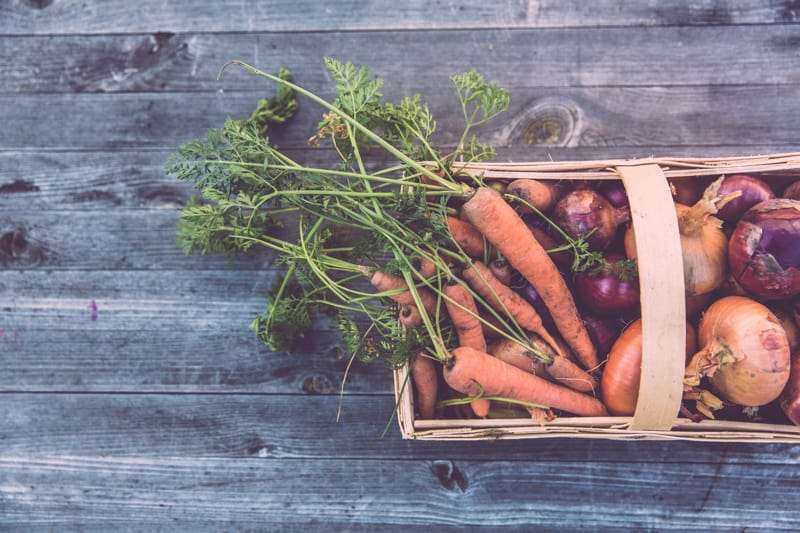
Starting a Compost Pile: The Inside Setup
First, choose an interior container and location. Most composting material originates in the home. Choose a spot near your main food prep area to encourage regular use.
In our home, we have a simple bucket with a lid under the kitchen sink next to the trash can. Some families with less organic waste keep their compost container on the counter.
The Best Container for Compost
Old clay crocks or pots look really nice. Be sure that your container can be easily transported to your exterior site and rinsed out to avoid odors.
An open container on the counter or under the sink quickly attracts bugs and rodents. It’s important to choose one with a lid, but some also come with charcoal filters. Compost containers need dumping regularly to avoid mold growth and spoilage.
For years, I just filled a bowl with my scraps during meal prep and have a kid dump it outside as needed. Last year I finally bit the bullet and bought us a countertop compost bin (very similar to this one) and it looks cute on my counters. Love it!
What Can I Compost in My Backyard?
All plant and simple-paper waste, including:
- vegetable/fruit peels
- eggshells
- coffee grounds
- wet paper towel
- hair & lint
- newspaper
- yard waste
- and more
The ideal compost pile will include a mix of greens (wet) and browns (dry).
- Green/wet are things like: food scraps, coffee grounds, and fresh grass clippings.
- Brown/dry are things like: dry leaves, sawdust, newspaper, and wood chips or dead branches.
Browns provide carbon and bulk to help circulate oxygen. Green materials provide nitrogen and most of the nutrients for the soil.
It’s important to have a good mix of both green and brown for the best decomposition system. Without it, your pile may take longer to break down, get stinky, or not be as nutrient-rich. (Although it will still decompose eventually.)
In general, we need to add more browns (carbon) than greens (nitrogen). Gardening experts debate the finer points of compost ratios, but for beginners: aim for a 4:1 ratio of browns to greens (ie. four parts of brown for every one part of green).
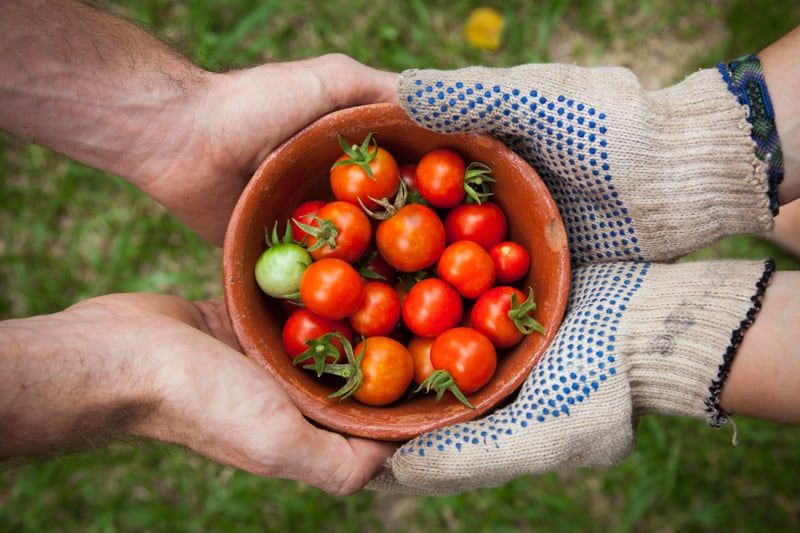
What to NOT Put in A Backyard Compost Bin
What we put in is just as important as what we don’t when starting compost. Here’s what to avoid in a compost pile for healthy, thriving soil.
- Avoid pet waste in your compost, unless it’s cow, horse, chicken, or rabbit. Dog and cat (omnivores) poop can carry bacteria and other harmful microorganisms that aren’t good for compost.
- Don’t add meat and fat (with a possible exception for fish bones) in your compost. These attract animals and smell terrible.
- Avoid coffee filters and tea bags unless you know they’re made from natural materials that will break down. (Coffee grounds and loose tea leaves are a-ok though).
- Remove produce stickers. Try to get in the habit of removing produce stickers before eating your fruits and veg. These don’t decompose.
- No synthetic materials like plastic, glossy coated papers, pressure-treated wood, and paint.
How to Start a Compost Pile Outside
Here’s what you need to get started with backyard composting:
- Dry and wet matter (green/brown organic waste)
- Oxygen (microbes need to breathe or things get stinky)
- Moisture (from the water you add, as well as natural humidity of the material)
- Heat (from the sun, as well as the energy of the decomposition)
- Space (in the home and yard)
First, choose a place outside for a dumping and decomposing site. The primary composting work happens outside the home when microorganisms in the ecosystem interact with the products you provide. These organisms eat, break down, and decompose the materials, turning them into healthy soil.
Points to remember when choosing a backyard compost area
- Make it easy to get to. Keep your compost pile convenient enough to use; even during inclement weather or busy days when you might feel it’s easier to just ‘trash’ it.
- Be sure you can get to it with a wheelbarrow if you want to add a load of grass or leaves, or if you’re ready to shovel it out to put in the garden.
- Give it some sunshine and air. While that damp spot behind the garage might be out of sight, it’s not going to give you as much zesty decomposition.
This is the site of your chosen bin. Set it up and you’re ready!
How to Start a Compost Bin
There are plenty of different composters you can buy or you can opt to save the cash and use something around your yard. A home composting system (HCS) can be as simple as:
- tying four old wooden pallets together
- making a circular ‘cage’ out of large mesh wire
- adding some vents to an old garbage can
- designating a corner of the garden as a compost pile
The Best Backyard Compost Bins
If you want to skip the DIY and just buy a compost bin there are a few different options.
- There’s the rolling drum style, like this one, which is totally #compostgoals.
- You’ll also find many in a lower price range like this plastic, stationary one.
- This classic compost bin has a hatch at the bottom for easy shoveling access. Simply layer the scraps in from the top, and finished compost comes out the bottom.
- Smaller models, like this composter, are great for urban homesteaders. It’s low profile but still allows for turning and aeration. And because it’s enclosed it helps keep stray animals away.
Right now we have a stationary plastic one we scored from the neighbor for free when they got rid of it.
The plastic drum works just fine and is more budget friendly than some options, but I’ve to try a rolling drum style at some point to see how much faster the process might be.
How to Make a Compost Pile
You have your indoor bin ready, your outdoor container prepped – now we begin.
You can start by dumping the eggshells and fruit peels from breakfast. To give your compost pile a keen head start though, you can first create a few intentional layers.
The simplest approach is to start with layers of dry and wet (ie. brown and green). Get bags of dry/brown materials and bags of green materials (green grass, manure, peels, your indoor bucket contents) and layer them in with each layer about 4 inches deep. Soak each layer with water before adding the next one.
Nature is far more forgiving than we give her credit for, so work with what you have. Just try to retain the principle: green and brown make composting go ‘round.
And don’t be scared to ask the neighbors for their old leaves or grass—they’ll be surprisingly thankful. Just avoid materials that have had chemicals applied as they could harm the living system of decomposition.
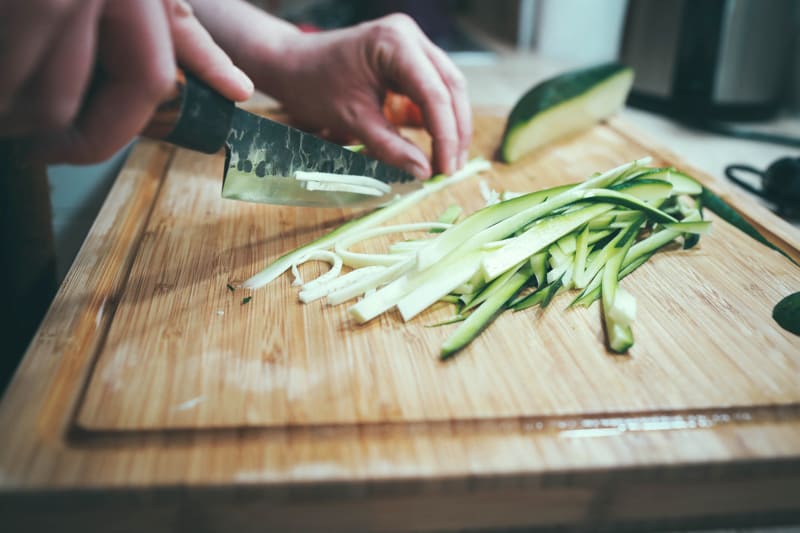
Adding NPK to the Backyard Compost Pile
One of the best kick-off meals you can give your backyard compost pile is a good dose of Nitrogen, Phosphorous, and Potassium (NPK).
While there are some great commercial brands out there, mixing some good ol’ blackstrap molasses into a liter of warm water and pouring it deep into the center of your pile works great.
For those who are a bit more adventurous in their composting, human urine (particularly male urine) provides the perfect ratio of NPK. Just don’t tell the neighbors! 😉
Backyard Compost: How to Maintain Your Pile
Finally, you’re in maintenance mode!
As your indoor compost bucket fills, dump it on the compost pile until you’ve built a layer. Next, add some dry materials. If the season is really dry add some water on occasion.
Depending on space, begin a second pile once the first is about four feet square. By the time the second pile is filled, the first will be ready to apply to your garden.
How Often to Turn Compost
About once a week use a garden fork to lift or turn the pile to add some air for those busy microbes. Here’s a good example of a compost fork that works perfectly, and is available on Amazon with free prime shipping.
Depending on the amount of materials, the weather, and the health of your microbes, you could have beautifully balanced compost within eight weeks.
So there you have it: a summary and start for your own personal composting adventure.
Try it out and see what happens! In the end, you’ll have less waste, a richer garden, and a greater bounty on the table (not to mention some great science lessons for the kids).
Do you have a backyard compost at your house?
Related Posts You May Enjoy:
- What is a Milpa, and Why Should You Plant One in Your Garden This Year?
- A Day in the Life of a Homesteading Mama?
- 7 Reasons to Hang Dry Laundry All Year Round
Original article was written by Dea Daniels of @i_am_village, and published in 2013. It was last revised and expanded by Red & Honey in 2021.
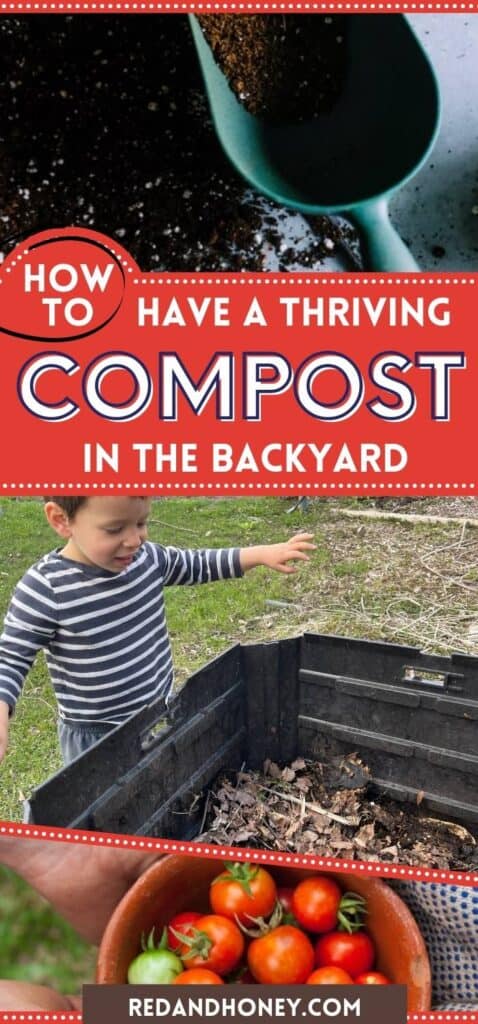

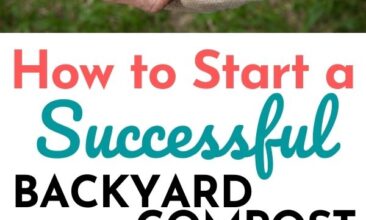
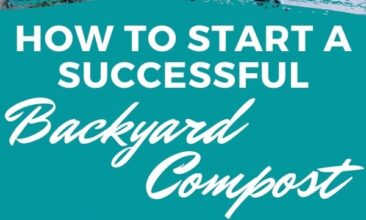
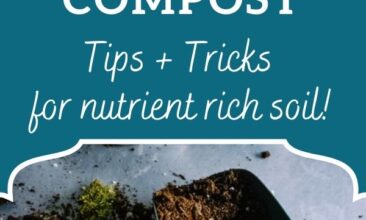
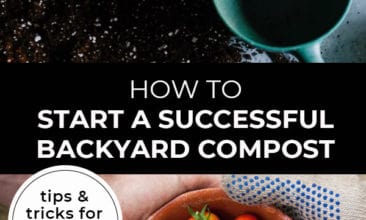
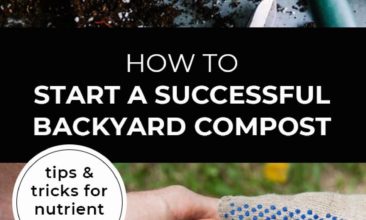
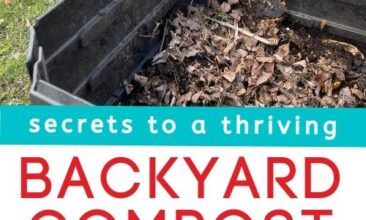

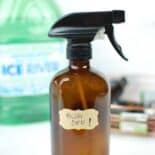
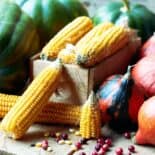

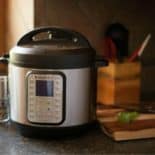





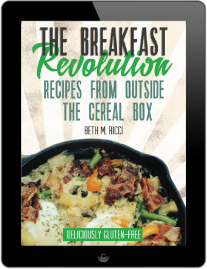
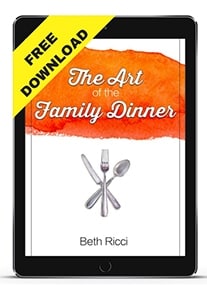
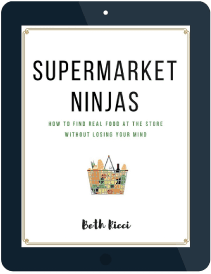
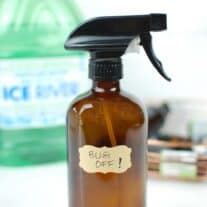

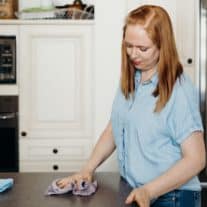




Ronel
Thank you for this info, it really helps a lot getting a compost heap going! I really enjoy your site and the articles!
Houseware
I truly loved visiting your site. Regards
Candace Hendrick
This is a great help. Composting is kind of intimidating to me, mainly because I don’t know what kind of container to use. I have a dog that would love to eat out of it, so it has to be set up to where she stays out, which should be easy since she is a short dog:) You gave me some ideas that I think I could pull off myself, like tying the crates or wiring. Thanks!!:)
Beth
Thanks for reading Candace 🙂
Holly (Your Gardening Friend)
This is a great post! You’ve taken a subject that beginner gardeners might find challenging or intimidating, and you’ve broken it down into bite-size pieces.
I’ve shared it on Facebook! 🙂
Beth
Thanks Holly! That’s high praise, coming from you 🙂 Thanks for sharing the post!
Sara
We have a sorta compose pile going … Just emailed this to the hubby 🙂
Beth
Thanks Sara! 🙂
Dea
Haha, yes, they’lleat anything won’t they! At least you get the manure in the end, if you want it 🙂
Krissa
Great post! Thanks for all the info. This might be silly…but one of the things holding me back from starting a compost is I’m afraid it will attract rodents. Is that a common problem? I don’t know if I heard of that somewhere or if I just made it up. 🙂 Anyway, pinned this post to my gardening board, thanks for the inspiration and information!
Dea
Great question Krissa!
Have no fear, rodents are not attracted to a healthy compost! The heat and natural breakdown of materials mean that the materials are regularly transforming into a moist black peat-like material (favored more by earth worms and the early birds ;))
Danielle @ More Than Four Walls
I’ve been wanting to start a compost pile for years. I thought about getting a compost bin, has anyone used one of those before? What is the benefit to using a bin (on a stand that you turn by hand) verses a big ‘ole pile in the back yard?
I’m not opposed to the pile but I wonder if our free-ranging chickens would be in it all the time and if that would matter….thoughts?
Dea
Well, I personally don’t love buying the ‘turny bin’. We had one out on our ranch and it filled up in a week so we started a pile. Also, those bins are pricey!
For now, we do a pile through the winter (then add it to a pallet-bin in the summer), a pallet-bin-pile at the end of summer , and a standup bin during the hot summer months summer (it came with the property and decomposes quickly from May-September, but then overflows once frost comes).
We had chickens for a year and they liked to pick through it. It made a bit of a mess but also added aeration and manure. If your pile is contained within pallets or wire they could stiil nibble at it without scattering it through the whole yard 🙂
Erin@TheHumbledHomemaker
What a great informative post! I tried to build compost before but failed at it! I’ll remember this for sure! 🙂
Dea
Yay!
Kelly @ The Nourishing Home
I used to have a huge compost when we lived in FL, but now I am in CA with virtually no yard. I was thinking about doing a compost using a compost bin because I really miss that amazing rich soil and also the whole concept of using everything and reducing waste. Great POST – you’ve inspired me to get going on this over the summer!
Dea
Oh I’m so glad Kelly! Once you get in the habit of it you’ll find it’s quite easy in all kinds of spaces! 🙂
Justyn @ Creative Christian Mama
Great info! We’re wanting to start composting once we get moved into our own house, again, but I’ve been a bit intimidated by it. I’ll be pinning this for future reference! 🙂
Dea
Awesome!
Anjanette
We did one last year in a rubbermaid container with holes drilled in the sides and bottom for ventilation and so the worms could enter and do their thing. It took a lot longer to “get going” than I imagined and I think it was too dry. Next time I may try a more open air version like yours. Just have to do some research on keeping the bears away…. (we’re in Alaska)
Dea
Yeah, bears like to check it out! Our bears were always a bit more interested in the garden itself (especially the berries!) but anything decomposing is a likely treat for them 🙂
Adrienne
Thanks for the info. I am really struggling about getting a compost going. We ended up with compost material in garbage cans and read that you can put bungee cords on top and then have kids roll them around on the ground. What do you think about that? It’s mainly kitchen scraps, but if we add yard waste to it should that be good enough?
And what are your thoughts on adding worms / having a worm bin to get the “worm juice” and add it? Thanks!
Dea
Oh how fun! My boys would love that! And yes, adding some good dry waste to that (leaves, straw, cut grass) will help balance that kitchen scraps.
As for the worms…. I love adding earth worms to mine, but the real hardcore composters raise special ‘composting worms’ and add in the worm castings. The compost pile itself is usually too hot for those little guys.
Overall, I don’t currently have enough knowledge to speak to that, so for this year I’ll just keep sending the boys out on worm hunts, tossing them into the pile, and hoping it helps! 🙂
Susan@learningandyearning
I love how you call the scraps “food for food”. I’ve always kinda thought that the 11th commandment should be “thou shalt compost”. 🙂
Dea
Thanks!!I
It just makes sense, right? 🙂
missy
I had to chuckle at this…but I do believe somewhere in the bible it does say something to the effect of “conserve your resources”, which is really along the same lines as composting 🙂
Rachel @ day2day joys
We have always rented to I wasn’t sure about starting a garden or composting but I think we will this year. This is a very informative post that is going to help me out.. thanks Dea!
Dea
Thanks Rachel!
We’ve composted wherever we’ve gone; when renting and even when living out of an RV. It really helps with the amount of garbage and most landlords are pleased to have free enriched soil!
Lea H @ Nourishing Treasures
Great ideas here! We used to have one until we got chickens, now all our scraps go to them 🙂
Dea
Oops, my reply to you went up top!
(Haha, yes, they’lleat anything won’t they! At least you get the manure in the end, if you want it :)”